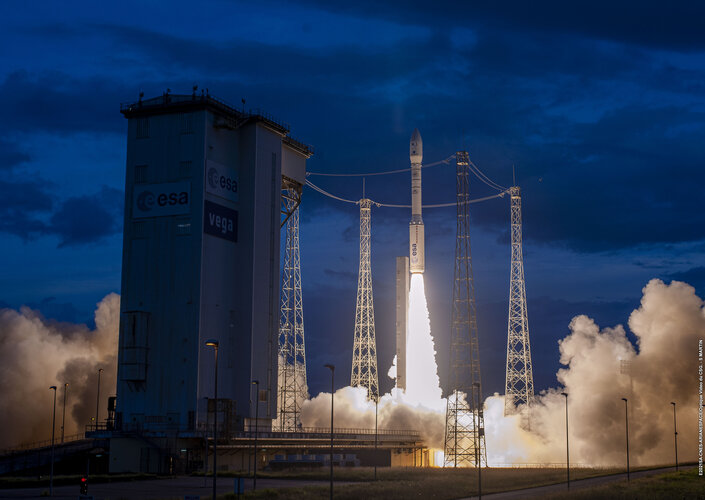
Placing medium-sized satellites into the low Earth polar orbits that are ideal for scientific and Earth observation missions – about 1430 kg to 700 km – is Vega’s trademark capability. But the vehicle has also delivered an ESA science mission to deep space – the gravitational wave detector demonstration mission, LISA Pathfinder – and followed the equatorial flight path needed for an experimental IXV ‘lifting body’ payload that paved the way for a European launchpad-to-runway space transportation service, with ESA’s uncrewed Space Rider vehicle.
Vega has also mastered ‘ride sharing’, to cost-effectively put multiple satellites into orbit on a single flight. This launch vehicle has set the stage for the imminent first flight of a bigger, more capable variant, Vega-C – delivering more payload and greater flexibility for the same cost. And, with its industrial partners, ESA is developing a further evolution, Vega-E, to reduce programme costs while boosting performance.
For Vega’s inaugural flight, VV01, the Italian space agency, ASI, supplied the principal payload. LARES (LAser RElativity Satellite) was an experiment to measure Earth’s distortion of local space-time, the so-called ‘frame-dragging’ effect predicted by Einstein’s theory of general relativity.
VV01 capped more than a decade of work on a small vehicle to complement ESA’s heavy lifter, Ariane 5, and the upcoming Ariane 6. ESA and Arianespace partly filled that gap by bringing the medium-lift Soyuz rocket to French Guiana from 2011.
But the breakthrough was Vega. Conceived by ASI, Vega became an ESA programme in 1998. Key partners include prime contractor Avio of Italy.
Vega combines three solid-fuel stages with a fourth, liquid-fuelled stage. Solid fuel motors cannot be throttled, stopped or restarted – after ignition they burn at full-power until the fuel runs out – but they provide exceptional liftoff thrust without the tanks, fuel pumps and fuel handling infrastructure needed for liquid propellants. These economical motors can be manufactured and fuelled in advance to be safely stored until needed for launch.



